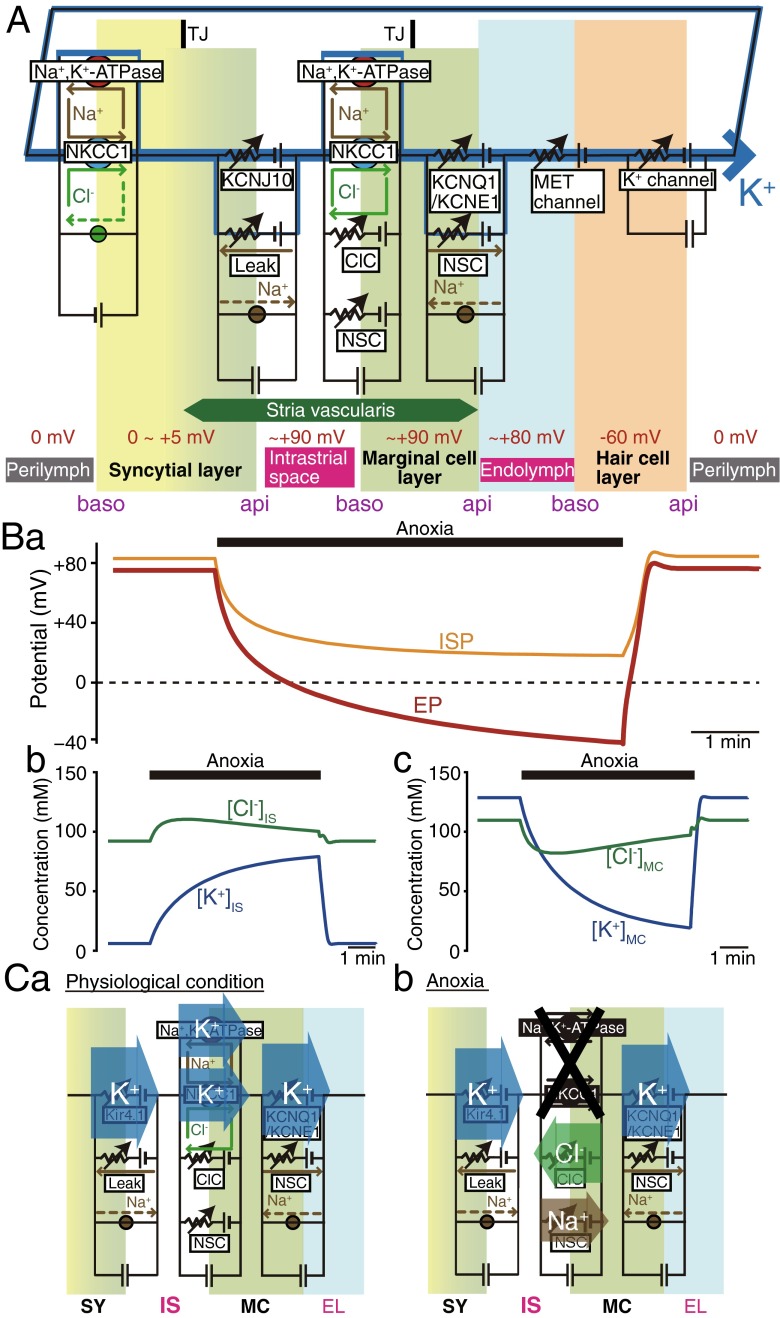Fig. 4.
Computer simulation of electrochemical dynamics in the cochlea. A Key elements in the Nin-Hibino-Kurachi (NHK) model. The profile of each membrane is described by electrical circuits that represent the function of channels and transporters. The circuits in six membrane domains deriving from the syncytial, marginal cell, and hair cell layers were connected in series to allow the flow of circulation current, which is carried by K+ under physiological conditions. NKCC1 Na+,K+,2Cl−-cotransporter type 1, ClC ClC-K/barttin type Cl− channel, NSC nonselective cation channel, TJ tight junction, MET mechanoelectrical transduction, baso basolateral, api apical. B Reproduction of electrochemical properties in the cochlea under physiological and anoxic conditions. Change of endocochlear potential (EP; a), IS potential (ISP; a), and ion concentrations in the IS (b; [K+]IS and [Cl−]IS) and marginal cell layer (c; [K+]MC and [Cl−]MC) were obtained by using the NHK model as reported in [75]; these results are in good agreement with in vivo measurements. Note that [Cl−] is moderately altered during anoxia (b and c). To simulate anoxic conditions, the activities of Na+,K+-ATPases and NKCC1 in the basolateral surface of the marginal cell layer were reduced to 5 % of the control. C Profiles of the circulation current in the lateral wall. Net flow of each ion across the apical surface of the syncytial layer (SY), as well as through the basolateral and apical surfaces of the marginal cell layer (MC), are calculated and displayed in the panels. Under physiological conditions, the amplitude of Na+ outflux through Na+,K+-ATPases is set to match the one of Na+ influx through NKCC1. Cl− transport by NKCC1 also cancels Cl− flow across the ClC-K/barttin-type Cl− channel (ClC). Due to these arrangements, the circulation current is composed purely of K+ (a). Under anoxic conditions (b), the carrier of the circulation current in the basolateral surface of the marginal cell layer switches from K+ to Cl− and Na+ that permeate the ClC and the nonselective cation channel (NSC), respectively. This change causes an increase in [K+]IS and [Cl−]IS and a decrease in [K+]MC and [Cl−]MC, as shown in B b and B c. IS intrastrial space, EL endolymph. Reproduced and modified from [75]

